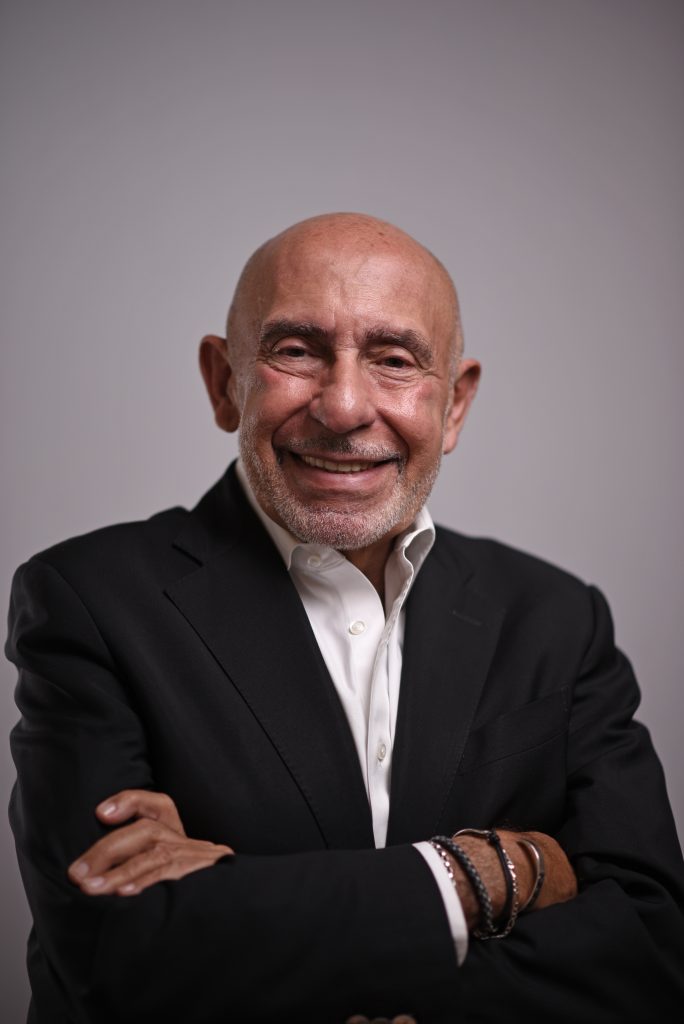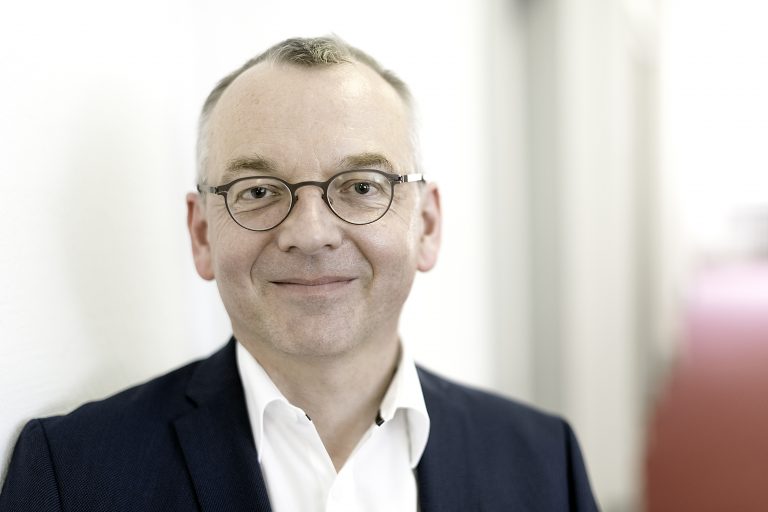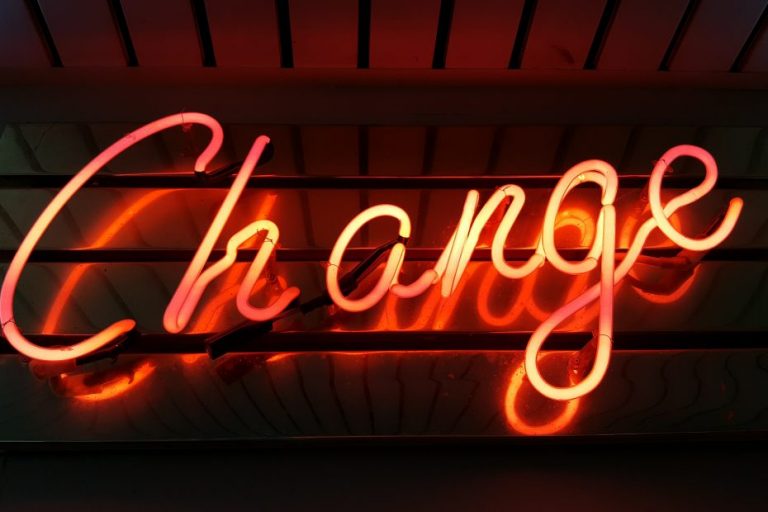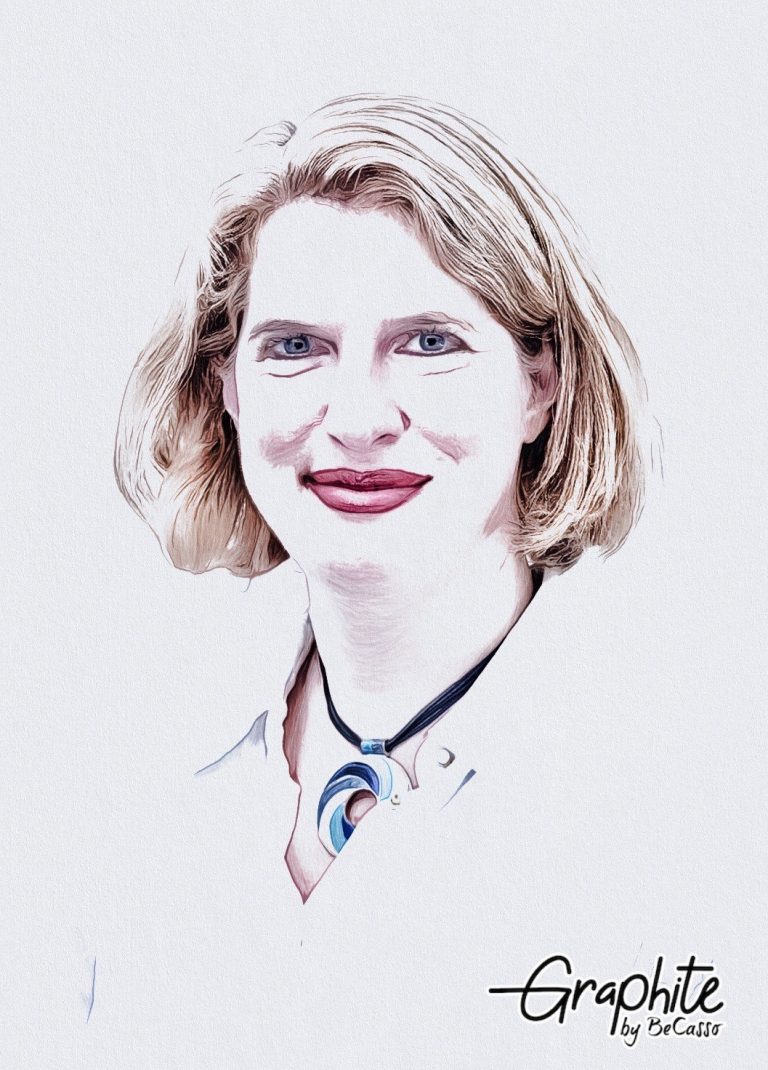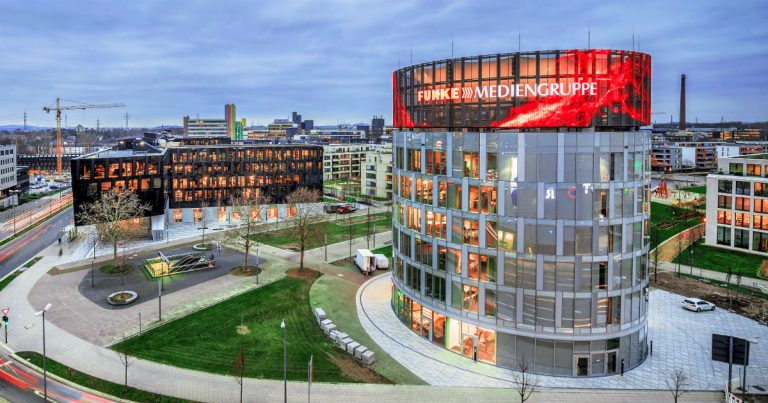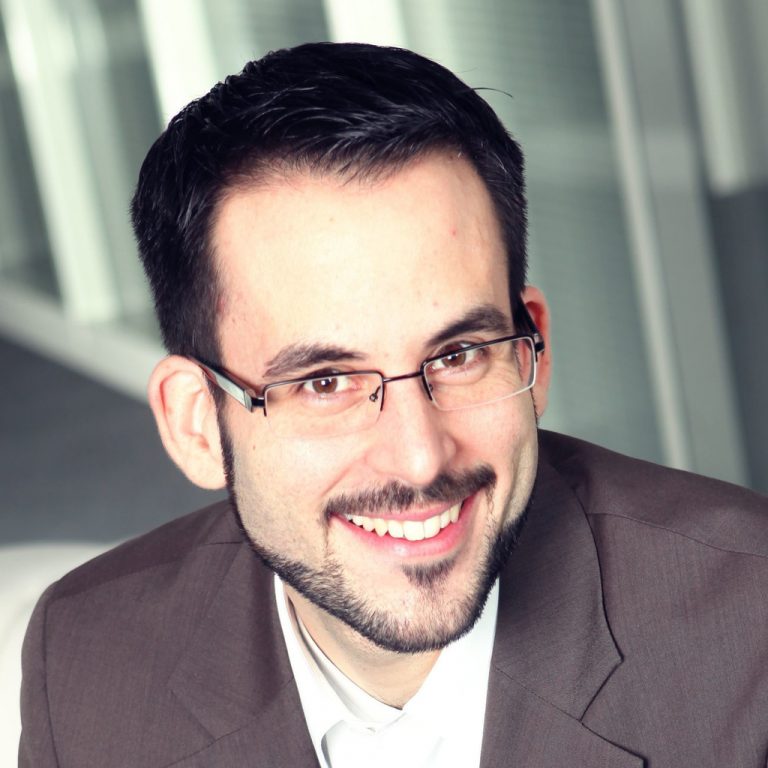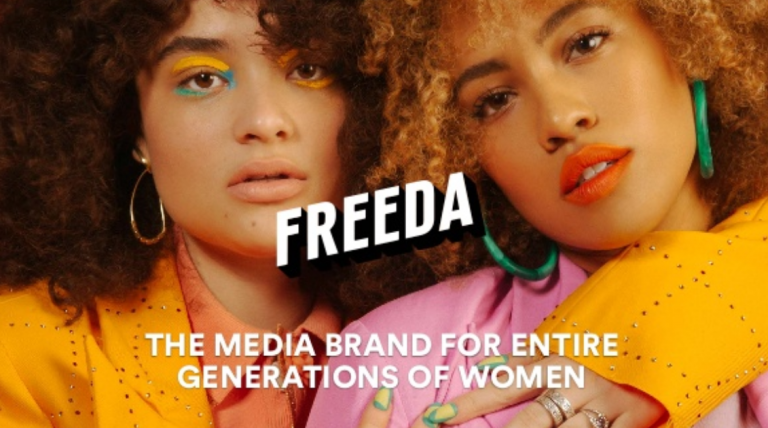I am so happy to present to you my favorite interview in 2022. I had the honour to interview news design legend Mario Garcia for NWE. He is the CEO/Founder of Garcia Media, and Senior Adviser for News Design/Adjunct Professor at Columbia University.
His award-winning work with over 700 titles has seen him redesign iconic news outlets including The Wall Street Journal, The Washington Post, Die Zeit, and The Hindu. For all his work with newspapers of record his personal focus is firmly on the future and the ever changing possibilities of new storytelling.
We spoke about his career and #learningbydoing, #newspaperdesign, #storytelling and #branding in the #mobile era, about his trilogy book “The Story”, about how #design, #culture and #diversity link.
Ioana Straeter
Mario, you are famous as a world leading newspaper designer. You have over four decades of experience, and you have worked with over 700 media outlets. One thing strikes me, though; your formal studies are in comparative literature and not design. Nevertheless, you were named director of Syracuse University School of Graphic Arts in 1977, and today you are the world’s newspaper design guru. How did this happen?
Mario Garcia
Yes, it’s interesting. My undergraduate degree is in journalism. For my graduate degrees, I figured that I was always very interested in literature, particularly in Spanish and Latin American literature. I was practicing journalism from the time I was 19. I was working as a reporter with the Miami News and the Miami Herald. But my interest in literature was always there, and I figured that I would go into that for my graduate work. Parallel to that, I was always working with newspapers.
It’s an interesting question because I never took a design course my entire life. And that is what I have devoted my career to, which shows you that you can learn by doing. When I was a young reporter with the Miami News of the 1960s, I was covering a lot of stories that had to do with the migration of Cubans into Miami. Obviously, that would sometimes involve violent news. The Cubans who came to Miami were still settling vendettas dating back to what had happened in Cuba and so on.
I was 19 or 20 years old, but I was the only bilingual reporter so I could understand Spanish and they would send me out to do all of these stories. A lot of these stories were not covering lifestyle. I was not doing celebrity interviews. It was about covering the drama. Then I would come back to the newspaper and there would be the designers. In those days, they were not called designers, they were layouters doing layout of the pages.
To me, that was so peaceful, so nice, such an artistic way of approaching journalism that I would sit for hours looking at what they were doing. And eventually, I was doing it myself. That’s how newspaper design got into me, I think in all of my work. I have always emphasized that content is what’s important because my background is in journalism. I realized that literature gave me storytelling. You combine journalism, storytelling and an interest in design, and that’s what my career has been all about. I hope that explains it.
IS– Very interesting. Mario, would you call yourself an artist?
MG – I don’t know if I would go that far. I think that to me, an artist, Salvador Dali is an artist, Van Gogh is an artist. An artist creates things that don’t necessarily have to convey a meaning immediately. I mean, everybody who sees a Van Gogh or a Dali in a museum or a Picasso is going to attach a different meaning to the work. What we do needs to be meaningful. What we do as visual journalists involves making sure that there is clarity. I tell my students at Columbia University where I teach now that if they do not attach meaning to what they present in a story, the reader will.
Maybe journalists are artists, I think that you can say that we are in the creative field, but I don’t know if I would consider myself an artist. I think that would be a stretch. Instead I consider myself a visual storyteller.
“Content cannot be separated from experience. Readers must connect with ease and the experience must allow them to be part of a story. Today’s designer is a visual storyteller.”
IS – Yes. Seeing some of your pieces of work, I thought they could be considered art because they do have clear meaninig, but they are also beautiful. I have another question for you regarding zour work with newspapers. You are known for your WED philosophy. Writing, editing, design, all of which play equally important roles. Would you like to tell us more about this method and how it differs for print or for digital?
MG – The WED concept, which is what I call it, is a concept that basically came to me after I had done maybe forty-five projects. I am on project seven hundred and forty-nine at this moment.
So this happened many projects ago, and I remember clearly that I was working with the redesign of the Philadelphia Inquirer, which is such an iconic newspaper. Benjamin Franklin wrote for that newspaper. It’s an important historical title in the U.S., and it was in the early 1980’s when that newspaper was going from a very black and white, sturdy kind of look, to a more contemporary look.
I was heartened by the fact that on the first day that I went to work on the newspaper, the editor took me into a room and showed me that they had 13 Pulitzer Prizes on the wall, the highest accolade you can give a newspaper for its journalism. He said: “Before you do anything here, Mario, I want to make sure that you realize that we have a history of good content, of good journalism.”
“Journalists love to write about change, but they are the last to take part in it.”
This was in the 80s, when newspapers were still not really designed: they were just coming to design. Technology allowed newspapers to do more with color. Journalists love to write about change, but they are the last to take part in it. They were not coming into this with a lot of enthusiasm. They knew the newspaper had to look better, but they were still concentrating on content and journalism.
That project was a landmark moment for me because although I’ve always been aware of the importance of content, the editor was guiding me at every step: “Whatever you do here, remember, we are a powerhouse in journalism.” After two months working there, I was flying from one city to another and over the clouds I was thinking “Why is this project going so well, while other projects take longer to materialize?” And I realized that it was because writing and editing were the foundation to create the design.
I started developing this philosophy of the WED concept, which became very popular. Newspapers all over the world followed it, universities teach it, and I’m very proud that that has been the foundation of my work because there cannot be good newspaper or journalistic design if you don’t have good writing and editing before you get into the design.
To this day, I teach that now to the new generation. My students are 22 years old and getting their masters at Columbia. I’m almost 75 years old, so that concept has survived the decades. It was there before there was the Internet. To answer your question this concept is more important today than it ever was, because the attention span is shorter, so you’ll have to seduce with very well-written headlines. The first paragraph of the story has to be superb. You’re reading this on the phone. You have four seconds before you decide you don’t like it and go on to the next one. I think it’s more important today than it was when the concept was created in the early 1980s.
IS – You also redesigned other high-quality media like The Wall Street Journal, Miami Herald, Handelsblatt – truly renowned names. Which is the project that you are most proud on and why?
MG – You know, this is like sometimes asking an obstetrician who delivers babies, which was your favorite baby of all of them.
I would have to say that there are projects that stay with you because of the difficulty of getting them completed. To this day out of seven hundred and forty-nine projects the two most memorable ones are: number one Die Zeit in Germany, and number two the Wall Street Journal. There are reasons why.
In both cases, you had. teams inside the operation, who were very good journalists, the content was superb, and in both cases, they felt that it was perfect the way it was. And here you come in. I always make the analogy you are the interior decorator coming into somebody’s house. There are people in the house who feel that everything in that house looks perfect. The furniture is perfect, the color on the walls is perfect, and you are the interior decorator brought in by someone to change that. You say, – “Well, let’s move the chairs here.” – [and they say] “Oh, no, don’t move those chairs. My grandmother left those chairs. We don’t want them moved.” -“Let’s change the carpet.” -“No, that carpet has been there since my great grandfather built this house. We don’t want that changed.” It becomes a challenge when you are the agent of change, and you know that this is an iconic, classic operation. Moving the pieces becomes very difficult. Die Zeit is the newspaper of the intellectual in Germany, and in 1994 it did not have color. It did not have photography. They believed in illustrations and caricatures. Then Mario enters the picture with a mandate to introduce photography, to introduce design, to introduce art directors. You are persona non grata in an environment like this. The progress that was made there was immense. That newspaper introduced photography, and introduced a very classic, beautiful design. It represents what you call German elegance, but also elegance anywhere. After that, art directors started coming in, the place became very vibrant and best-designed. Time and time again it won awards as one of the best-designed newspapers in the world. That’s a story that resonates with me as showing what can be done if you don’t give up; if you really manage to work with the internal team, and again with great writing, great editing and now design.
We all know that The Wall Street Journal is an iconic financial newspaper. You say “Wall Street Journal” and people immediately know what you’re talking about. By now, it’s 1998. No color, mostly graphs. It’s a very boring kind of look, and they want to shake it off and to introduce color. The editors are telling me: “Mario, go easy on the color. We don’t want to look like a cheap down-market newspaper” because that’s how editors in those days saw color. If you put color in the newspaper, we are going to be less formal, less authoritative, a newspaper for the masses. Yet color was introduced. It was a big success. We did it all over Europe, all over Asia. Today, when I look at the Wall Street Journal or sometimes, when I find a copy of a printed edition, I look at that color in the What’s News column on the front, and I say that was a giant step forward for design. Now nobody thinks twice about it.
Those two projects are memorable. But at the end of the day, each one of these projects is memorable. I learned a lot doing all of them, and I am thankful for that kind of career. I’ve been able to work in 120 countries, always respecting the culture; and design adapts to culture a lot. What works in Brazil may not necessarily work in Scandinavia, and you have to respect that. I never had one model that fits all. I always went and started with a blank slate, a blank page, and that’s how we developed.
IS – We hear a lot these days that newsrooms struggle with the topic of diversity. Is there a link between design and diversity?
MG – I think that diversity is an interesting topic with newspapers, especially in the US, where this is a topic of great interest. It’s not only trendy but a necessary topic. In many newsrooms, their consideration of diversity is about hiring either an Asian writer, or a black writer, or a Latino writer. Once they have that, then they’ve complied with the diversity requirement. Then the Latino writer will be writing about what happens in the barrios, and the Asian writer will be writing about the Asian community. To really embrace diversity, these newsrooms have to say from now on we are aware of what is happening. You don’t have to be black to write about the black communities. You don’t have to be a Latino to understand stories that resonate with Latinos.
In terms of the design, I think that design and culture are linked. There are many aspects of design where what one person likes, another will like as well. I think that the biggest difference is in the use of color. For example, when I design newspapers in Latin America, one of the first things I do is visit the local galleries. You know, how artists in Colombia paint? How artists in Brazil paint? If so then you’ll realize that even the most sophisticated people in Latin America embrace bright colors. But then you go to Scandinavia; a trip I’ve always done by train. You can travel to Norway, to Denmark by train for three hours, going through farmhouses and little towns, and you never see curtains in any color other than white. That is the same in Germany. Curtains are always white. You take a train in Brazil from Sao Paulo and there will be curtains in green, in yellow, in red. As a designer, you cannot ignore how people approach color. Also in Asia, in India, I worked in all these countries, and I take it all in. You have to realize that the American model is not “the model” nor is the French model “the model” etc.
The number of times that I have been in one country and a well-meaning publisher would say, ‘I want you to do here what you did with Die Zeit’. [I have to say] Well, you know, this is not Germany. This is not an intellectual newspaper read by the intelligentsia, your newspaper is popular, it’s the newspaper for the masses. I am honored that you like Die Zeit, but you can’t transfer a design from one place to the other. I think that there have been articles written about me that say “Mario Garcia is a chameleon”. This design doesn’t look like the other one. I take pride in this. I take pride in the fact that my projects don’t look alike because they shouldn’t. You would not survive 52 years in this business if you took one model and transplanted it everywhere. I always begin with a clean slate and see where the pieces fall. That’s what’s interesting.
IS – You deal with a profound change process in every redesign project that you have. Do you have a method to make people accept your ideas? How do you deal with the resistance towards you or towards change?
MG – You learn to listen to people. You realize that this is their newspaper, or their magazine. They know more about this publication than you do.
I always look at the volume number. If you come into the Wall Street Journal and on that day, the first day you arrive there, it says “volume one hundred and five” it means that for a hundred and five years this newspaper existed without Mario Garcia touching it. You have to respect that. I always said you have to do a handshake with the past, sort of a light handshake, and then use a strong hand to pull you to the future.
I think that you have to respect what has been there before. I go into the archives. I read the history of this publication. The other thing that always works is that for the first part of any project, I do not work internally with the art directors or the people who are there. [That way] I am not contaminated by the fact that they’ve been there 25 years. I work with my team on the first burst of ideas. Once I present those ideas, the project moves in-house. I always tell the clients there are two phases in a project. Fantasy and reality. The first stage should always be fantasy. What if? What if we do this? What if we put color in there? What if we eliminate this? Once you present it, in my experience, 75 percent of all my fantasies in all these projects lived. 75 percent, because somebody in the group looked at it and said we should do this. That has worked for me. Then once the project comes in house, I always tell them: “I brought you a wet sculpture. You know, this is what my team and I think you should do. But is wet, you still can move the head to the right and arm to the left.” That’s when then they begin to get ownership of their project.
Usually, these projects take about six to nine months because you go through a progression. I always go through sketching first presentation of those sketches, then prototyping, creating what the Germans call a new “Nummer” and then finally, the introduction of the new concept.
There are four steps that I follow very religiously because they work for me but with that every project is different. You know, some people move through the first step very quickly. Others take months to deliberate, and you have to adapt to that. But the idea is to listen, not marry yourself to one idea and say: “Well, this is my idea, and it’s the best idea.” I would not have survived if I did not listen.
If I had a drawer full of ideas that were not accepted and I looked at it, I would probably start crying because there were many ideas that my team and I thought were great, but they were killed on arrival for whatever reason. You move on! I always tell my students they have 24 hours to do the crying, the funeral, the burial, and then move on to the next idea. Don’t marry yourself to an idea to the point that you cannot advance.
IS – Lovely. I love this. You wrote the book “The Story” and you delivered a lot of valuable information on storytelling in the mobile era. Recently I read an article of yours about storytelling in the pandemic age where you recommended using social cards. Can you tell us more about your concept of storytelling in the mobile era? And tell us more about these cards you mention?
MG – The book “The Story”, which is now available in Spanish as well, is a trilogy. I wrote that book like a man on a mission because I believe that we need to create content that is specifically created to be consumed in a small platform. I would say 65 to 70 percent of all the information that we create to date, whether you’re a bank or university or a newspaper or a magazine is, creative thinking in terms of squares. Square like the screen that I’m looking at in front of me, a desktop, a laptop or the screen of a computer or if you are a little older and thinking of print, like the page of a newspaper.
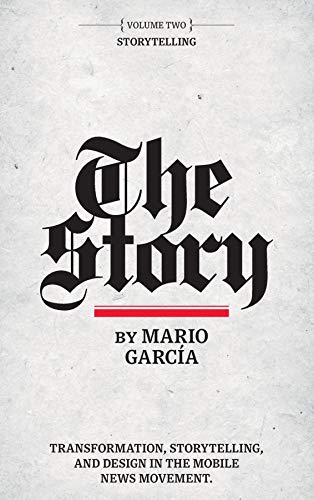
Yet most people are consuming this information in a vertical format. The moment I promote this in the book, the moment I start a workshop with journalists around the world, which I do on a weekly basis on storytelling, reporters are the people I wanted in that meeting primarily. I say to them, ‘do not have any square paper in front of you. Fold the paper like this so that you think linearly’. With that comes a different form of writing. If people are scrolling and reading on the phone, the phone rings, the phone takes you to email, to Instagram. There are interruptions. This is the journalism of interruptions. You have to write shorter paragraphs, put some heads in there.
The social cards, to come back to your question, are my way of migrating ideas from mobile and digital to print and from print to digital. Most people nowadays come into a story through a link. Chances have they have seen that link either on Facebook or Twitter or Instagram. Let’s say it is a recipe. “Oh my god, I saw this wonderful recipe. I want to share it.” You click and send.
The social cards are one way to make sure that you offer more than a link. You can take this card, copy-paste, and send it, and there you also have the branding for this publication. You realize that a lot of branding is lost when people send links, they forget where they got them from. I think there was a Pew Research study a couple of years ago where they ask Americans who published this story and a large number of people say Facebook. Well, Facebook doesn’t publish anything, but you read it on Facebook. A friend of yours sent you a link on Facebook, and people think that Facebook is a publisher. It is not. The social card is a way of taking the link. the summary of the story and the label that says this is the Süddeutsche Zeitung, or this is Le Monde. It has worked for me in projects all over the world. I’m a great promoter of social cards. This is again part of the wet concept where the art director works for the editor with a reporter. These workshops, to me at least, continue to be sort of a miracle because you get a group of reporters, all on Zoom and they are still writing stories as if they were going to be published either for laptop consumption or desktop consumption or for print. And in two hours we need to teach them how to write for mobile. It’s fascinating.
IS – The past decade was extremely disruptive for media. We’re seeing that what’s coming next will be even more disruptive. Do you have a vision for the next 10 years?
MG – Right now, I think that three years is the most that you can properly look forwards.
I think that the generation that is right behind, like the generation of my grandchildren, are very digitally savvy. They know how to maneuver and navigate around all kinds of digital platforms. I think that we need to catch up with that. You will probably see more use of artificial intelligence. You will see more virtual reality, augmented reality as storytelling tools.
My vision of that is that we need to catch up with mobile storytelling first; how can we better tell stories on smaller platforms? Right now, this smallest platform is the screen of a phone where 82 percent of the people are consuming content all day long. The average person comes to a mobile phone one hundred and fourteen times a day, sometimes to order food, sometimes to get a map. But it’s a great possibility for media houses to really introduce their brand.
We don’t do enough of that.
The average media house still thinks in terms of editions. If you have a weekly magazine, say Paris Match, or Time magazine, you deal from Monday to Monday or from Friday to Friday. In the mind of everybody who works there, they are working on an edition that will be a group of stories that come out at a certain date.
If you are in a daily newspaper, you go from 5:00 in the morning to 5:00 in the morning the next day, and yes, editions are still there. But in this mobile era, we think in terms of stories 24-7.
Even for television; who sits there waiting for the six o’clock news, for the 10 o’clock news?
They still have that because that is how news was presented through the ages like a newspaper in the morning, a weekly magazine once a week, a television broadcast two or three times a day.
I think that kind of mentality has to shift in the next three years. We need newsrooms that see the stories of the day as something they are following, and which people will consume at different times.
Look at what is happening with television programming. People stream, and watch shows, whenever they want to watch them. The news business is the same. People are constantly connecting.
One of the things I do with all my clients is to try to create mobile branding. How can you create a symbol where the name of your newspaper or magazine is easy to catch? Very easy to see. Normally, the New York Times has T for Times, a G for The Guardian. Why is that? Because eventually, when print publications are not around, and the name is not seen on a printed page, you have created a mobile brand for yourself small enough that you can put it on a social card anywhere. This story came from The Guardian. This story came from Süddeutsche Zeitung. Whatever it is. These are my missions these days, which is really a far cry from being a newspaper designer.
You cannot leave journalism behind. In all my workshops right now I want reporters. They initiate the story, they write the story, they’re the ones who are going to write it for mobile devices. That’s the beginning. I always say go from small to large, not from large to small. In many media houses, everything is conceptualized on a large scale and then dumped into a small platform. If you ever had to move from one big house to a small house, you know that’s going to be difficult to do. It’s much easier to go from small to large. Every reporter writes a story first for mobile, then that story has other lives on other platforms, but not the other way around. It’s a lot of work to do, but that’s how I see the next three years; newsrooms updating themselves, creating a mobile-first, not even digital-first, but mobile-first philosophy. That’s what should be coming.
IS – Still, a lot of the local media houses are struggling with digital-first; certainly they are not yet mobile. I want to take a step even further, because nowadays there is so much talk about the metaverse, NFTs, the digital currencies – these things will change dramatically the way we work and the way we live, and the way we consume media. Do you think this virtual world will revolutionize design? How will this development change news media?
MG – Ironically, I think that the design of now and the design of the future; designing for mobile, for example, is very different from how we conceptualize and design stories for print and even for digital.
“The concept of repetition in design in mobile is a plus. The concept of repetition in print was not a plus.”
In the world of mobile people want familiarity, which means they want templates that are used time and time again. The concept of repetition in design in mobile is a plus. The concept of repetition in print was not a plus. You wanted the food page, the entertainment page to look different every week. That is one big change. We are going to see more creation of one-time designs that are very good, robust, attractive and functional. And then you have a template that creates familiarity for the reader.
You don’t want to look at your phone and find every day something different to navigate. That’s the first thing. The second is that the emphasis will be more on the storytelling, not so much changing the design, but creating templates. There are media houses that do not explore audio and video, they put photos everywhere because that’s the mentality they have. Many people today love to see videos, they love to hear. Instead of using a quote in text, let the chief of the fire department tell you how this fire was in his own voice. We don’t explore this appeal to the senses that is so easy to do in the world of mobile. I think that design is going to be changed, but the change will be creating very sturdy, good designs that also help with familiarity and with continuity.
I think the biggest change is in journalism itself. I have lived through five revolutions in this business.
I started when there was hot metal type. And then I went through the revolution from typewriters to computers. That was a big revolution for the media. Then I went through the revolution of black and white to color. Then came the internet, and now mobile. None of those other revolutions affected how you would write a story. Journalists could still write a story, as they always had, only now there would be a color photo next to it.
In today’s environment, the revolution that we are going through cuts to the heart of journalism. This is where the problem lies for many journalists as they need to compose stories differently. And that is not easy for journalists to accept. I see it in our own journalism school. You have to teach students the fundamentals of how to build a real story that hasn’t changed. But you immediately have to take them down the road of how we tell stories for the moment, which is the opposite of print. In print you see images and then you read. In mobile, you read and you see, you read and you see: it’s like a WhatsApp conversation. I write and then I show you immediately. Then I continue writing and you scroll through that methodology of incorporating visual images that become paragraphs.
It’s a Big Revolution. Newspaper editors and magazine editors have seen photos as art, and text as journalism.
In the mobile world images in the middle of a paragraph become a paragraph all by themselves.
This is what the fire chief had to say. Then instead of a paragraph with a quote, you have a clip where you hear the fire chief saying it. This is something that I’m exploring; how can we turn visual assets into journalistic assets, and that in the middle of a story? How do you have an image on the first screen of the phone that is the equivalent of a good headline that tells you what happened?
“My advice: if you have not become digital, then skip that and move to mobile. It is easy to do.”
There are great newspapers doing good things in the U.S. The Washington Post and The New York Times do wonderful, wonderful storytelling with visuals. I think that one of the best examples in the past year was when the Notre Dame Cathedral burned as a breaking news story. The Washington Post did this live with short clips of videos showing the people looking at these fires and this iconic cathedral burning. We are beginning to do this in real-time with breaking news. But 75 percent of local newspapers are still struggling to become digital. My advice to them, if you have not become digital, then skip that and move to mobile. It is easy to do.
IS – That brings me to a quote of yours that I love. You said once: “This is the best time to be a storyteller. A lot of people my age lament what was. I celebrate what is.” The future is really there for storytellers to tell a complex story with visual elements, interactive elements and so much more. Do you still believe this?
MG – I maintain that these are the best times to be a storyteller. If you’re writing a story these days, and you have a phone in your hand, you are the videographer, you are the audio expert, you are the photographer.
Let’s say that I’m covering the first day of kindergarten. In the old days, I would have had a photographer by my side taking some pictures. In today’s environment, I can make videos of the children singing. I can make a short video of the teacher in front of the class. I can record audio. This is the way stories were meant to be, and I always do a correlation between children’s books and mobile storytelling. Children’s books always had elements that were surprising. Things will pop up. That kind of storytelling that I mentioned in my book, was written in 1926, Winnie the Pooh was already written like this. They were almost written like Instagram Images in 1926. In my workshops, I always tell the editors, if I were to confiscate your phone right now and look at your last WhatsApp conversation, it would be like this. You write and you show. So why are you writing stories that are very long? And then the visuals are all in a photo gallery. Photo galleries are like 50 minutes ago. You don’t do photo galleries. You incorporate the visuals with the story. There’s a lot of work to do.
IS – Lovely. Now some personal questions. I know that you are a busy person, and I see on your social media posts that one day you are in Hamburg, then the next you are in New York again, or in India. I wonder sometimes how on earth do you manage your schedule to oversee so many projects?
MG – I am disciplined. I think that this is what I have done for 41 years. I don’t know any other life. I am disciplined. I always wake up early and do a lot of work. I’m a morning person. I never let any emails or any questions addressed to me sit there on the computer. Its organization and discipline. That’s it. And not letting emails, or message accumulate.
IS – Mario, my next question is about how do you keep yourself updated? We live in a world where change and technological advancement progress at a very fast pace. Do you have preferred books, newsletters, blogs, podcasts that inspire you?
MG – I read I would say a total of sometimes 16, 17 different titles a day. I learn a lot about what is happening by observation, by seeing what the good brands are doing. As a professor I am in contact with 22-year-olds every single day. These are students who don’t remember life without Google, and I tell them that I remember life with Gutenberg. But I think that the lesson here for editors, publishers, and designers of a certain age is that the role of mentor and mentee has changed. I surround myself with young assistants and young people because they would think in a way that I could never think because I’m almost seventy-five. I tell my students when they get their first job, see if you can mentor an editor mutually, you can help each other. If you’re going to work with an editor who is 55 years old, who has been in the newsroom for 30 years, that person is going to benefit from you. At 22 years old, 23 years old you are inspiring and able to tell them how things work today. Of course you do this respectfully. You still work with an editor who has a lot to offer, a lot of experience that can help you. But you can help this person too by mentioning sources and so on. For example, my assistants sometimes will bring to my attention websites that I would never have visited on my own. I analyze them, and I write a blog about it and people always say: “How in the world did you ever get to this website?” Well, not on my own. I would have never gone there.
I think that it’s important to surround yourself with people who will get you up to date. I am always very much in tune with technology through magazines. I look at Wired, I look at Axios on a daily basis. I look at the reports from The Guardian, The Washington Post, The New York Times on technology, which are very good and there is a lot of material to absorb.
There is always something that will tell you that this we should be paying attention to, and it is very rapidly changing. You have to keep up.
IS – Thank you, Mario. My last question is also a quite personal one. If a fairy were to grant you one wish in your work with newspaperes, what would be your wish?
MG – I think that my wish at this point would probably be to have more workshops, not necessarily with designers, but with reporters.
I think that I would love to embrace reporting teams in every newspaper and get them to understand how wonderful mobile storytelling can be. Because mobile storytelling borrows from cinematography, from radio, from television. It is none of the above. It’s all of the above. I think that writers who take to this will not only benefit their publications, but also benefit their personal careers because they will be writing in the style, which is easier for people to consume. My wish now is to expand my network so that I am not referred to as the newspaper designer, but as a visual storyteller, and as a mobile visual storyteller, and I bring as many reporters as I can to embrace that in my workshops and classes. That would be my wish.
IS – Lovely. Thank you so much, Mario, for your time and for wonderful insights.
MG – Thank you.
Dr. Mario Garcia is CEO/Founder of Garcia Media, a global consulting firm.
He is also the Senior Adviser for News Design/Adjunct Professor at Columbia University Graduate School of Journalism, which he joined in 2013 as the Hearst Digital Media Professor in Residence.
He is known worldwide as one of the premiere media designers, having completed over 700 projects in 120 countries, including TheThe Wall Street Journal, The Washington Post, South China Morning Post (Hong Kong), New Straits Times (Malaysia), Aftenposten (Norway), The Philadelphia Inquirer, Die Zeit and Handelsblatt (Germany), all the McClatchy newspapers in the US,8 Postmedia newspapers in Canada, Goteborgs Posten( Sweden), Il Secolo XIX (Italy), The Citizen (South Africa).
His corporate clients include Facebook, Walmart, the United Nations, Hapag Lloyd and Jet Blue Airlines.
He is the author of 14 books, the latest of which is about mobile storytelling – The Story – a trilogy, and a book specifically written and designed to be consumed on mobile devices. The trilogy unfolds as: Transformation, Storytelling and Design. Order The Story from amazon.com.
Mario founded the Graphics & Design program at The Poynter Institute for Media Studies, where he serves as a member of the Poynter Foundation. He has been involved with the Institute’s EyeTrack studies since the 1980s, including the most recent EyeTrack for the Tablet in 2012.
His academic career includes full professor at both Syracuse University’s Newhouse School of Public Communications and the University of South Florida’s Department of Mass Communications.
Mario has received over 300 SND (Society for News Design) Awards, including the Lifetime Achievement Award. People Magazine selected Mario among the 100 Most Influential Hispanics. The University of Missouri awarded Mario its Medal of Honor in Journalism.
Mario received a Ph. D. from the University of Miami, 1976.
With courtesy to New World Encounters for allowing me to publish this interview here for you.
#nwe2022 #nwe #innovation #mediainnovation #newspaperdesign #mobilestorytelling #mobilebranding #visualjournalism #digitaljournalism #technology #mediabusiness #digitaltransformation #newworldencounters #newsletters #contentcreation #reports #productdevelopement #innovation #mediainnovation #digitalmedia #growthhacking #mobile #audio #leadership #innovationmindset #customerneeds #customervalue
